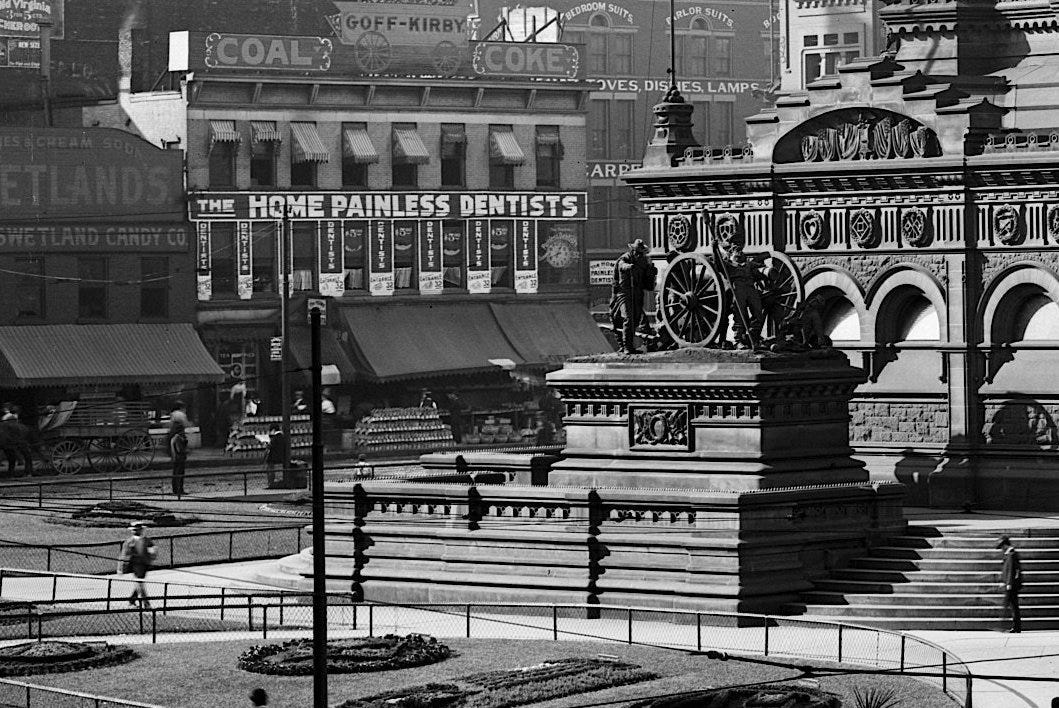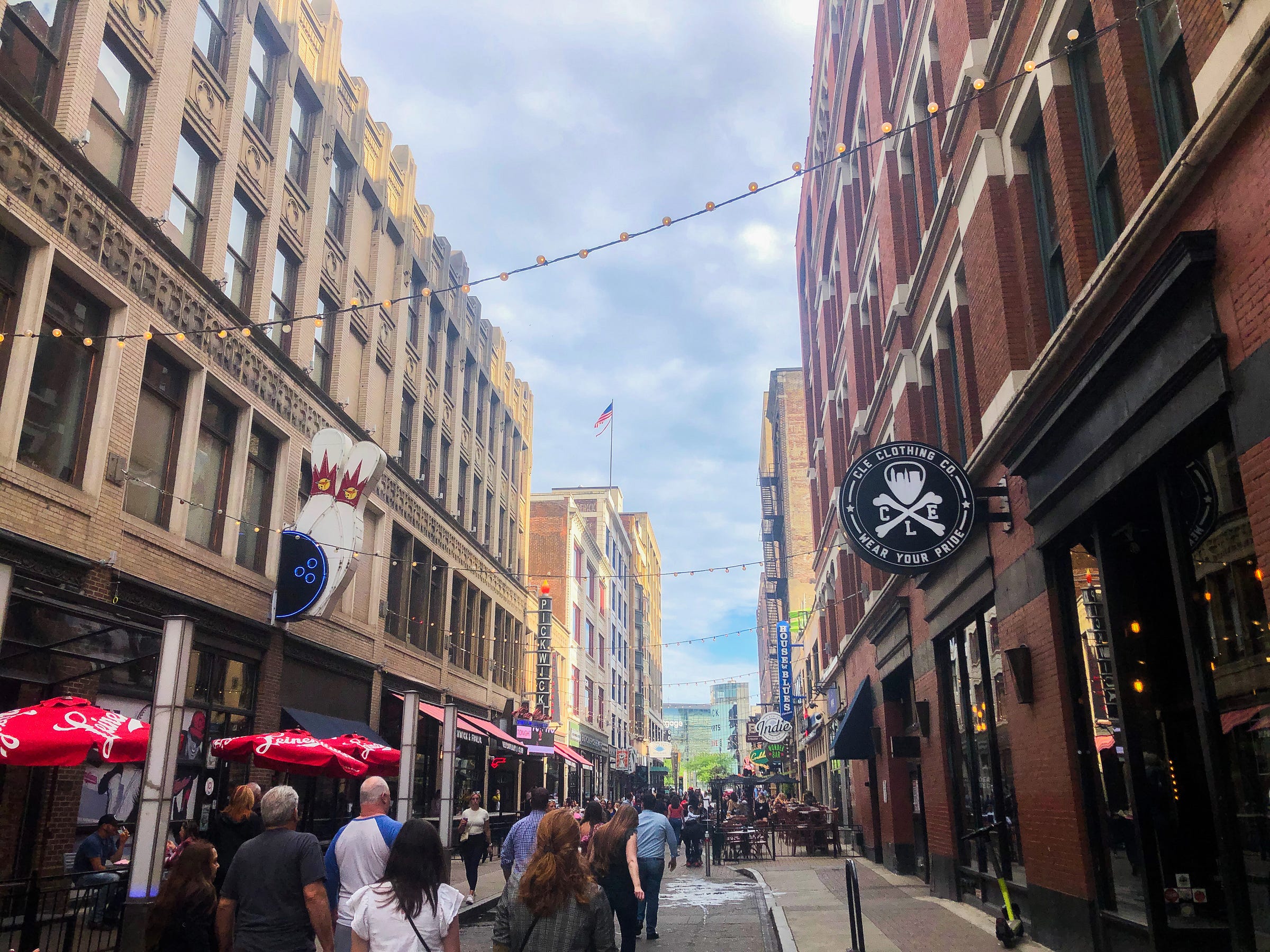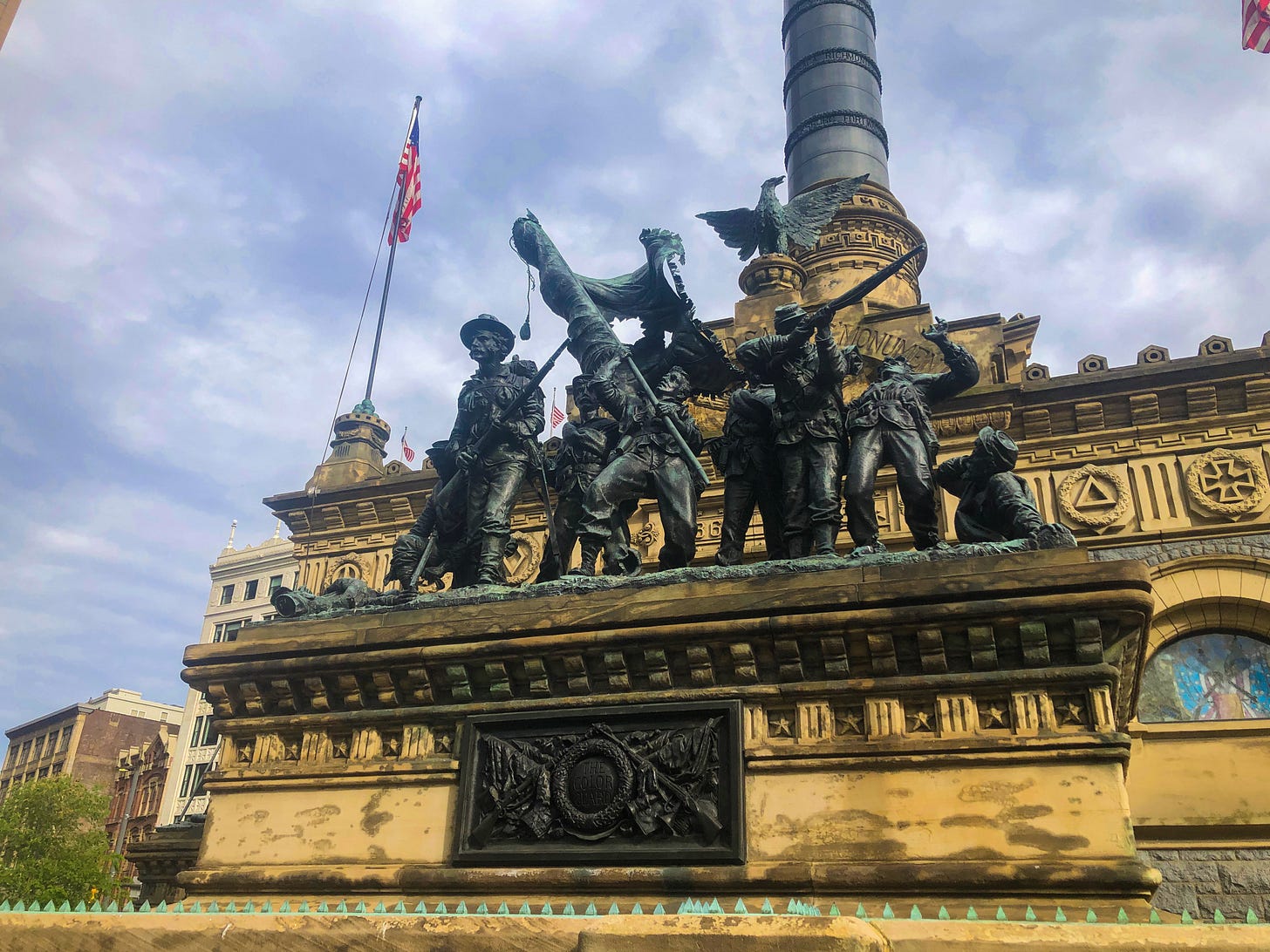Statues & Hostile Architecture: A Curious Combination
Cleveland, OH
I recently had the opportunity to visit downtown Cleveland. Taking in the lakefront breeze, I walked through the historic core of the city, listening to the chatter and excitement of brew-pub nightlife during a Guardians home game.
There’s a nice string of parks and public plazas which connect City Hall to a major shopping and transit center in the South-West end of downtown.
I walked along the mall of green space to its terminus at Tower City and stopped when I reached the Soldiers’ and Sailors’ Monument. This statue, constructed in 1894, is meant to memorialize Union soldiers who fought in the Civil War.
Staring up at the monument, I couldn’t help but notice something strange:
Metal spikes cover every stone ledge and flat surface of this memorial.
The spikes are an example of Hostile Architecture (though I find Anti-Homeless Architecture a more fitting name), a design practice meant to limit unwanted behavior in public places. It’s become incredibly common in North American cities.
I’ve noticed hostile architecture as studs on benches and large spikes under freeways before, but I had never seen it on a public memorial.
Looking at the pointed edges on this veterans’ monument, I had to ask myself:
“What were these soldiers fighting for?”
The prevailing narrative, the one upheld by this monument, is that Union soldiers fought heroically to preserve national unity, protecting freedom for all.
The American Civil War, and the events that followed, are much more complicated.
While the Soldier’s and Sailors’ monument commemorates Union veterans for being on the right side of history, the hostile architecture detracts from its message of unity, and points towards a more sinister reality of American history.
My original assumption was that the spikes were not an original component of the monument. Perhaps mid-century planners added them to deter unhoused people during the decline of Cleveland’s industry. I was wrong.
Look closely at this photograph from 1900, and you will see the shiny metal teeth running along its ledges. Hostile design has always been a part of this monument.

Perhaps Clevelanders have always known this. I shouldn’t have assumed 19th century architects would be more favorable to the unhoused than 20th century architects.
The Soldiers’ and Sailors’ monument claims to honor a fight for freedom, yet it actively restricts freedom in its own construction.
By including these surface spikes, even a public statue is not truly public. Hostile Architecture restricts behavior for anyone in this space; you are free to view the statue, but you are not allowed to sit down and rest underneath it.
It suggests an alarming set of priorities by the local government, too.
The metal teeth demonstrate that the designers were well aware of unhoused populations, and were more concerned with moving them away from the monument than actually fixing the economic conditions that caused their poverty.
If we are supposed to believe what this monument suggests, that the end of the Civil War brought unity and peace to the United States, why does it include a glaring acknowledgement and disregard for poverty within its own design?
Many Americans finally realize that the United States continues to perpetuate racial and economic inequality, long after the Civil War. We are aware of redlining, home loan discrimination, and urban renewal leveling minority neighborhoods.
The truth is, Hostile Architecture has also played a massive role in systemic discrimination throughout our nation’s history.
Southern State Parkway in Long Island originally had overpasses intentionally too short for buses to pass underneath, preventing residents who relied on public transportation from accessing parts of the island.
Benches and public restrooms in cities all over the country have been removed, denying basic rights to those who rely on these amenities.
Anti-Homeless design elements demonstrate that local officials prioritize making unhoused people uncomfortable over helping them to no longer be unhoused.
It’s a failure of our city governments.
The Soldiers’ and Sailors’ Monument is a reminder that discrimination in our built environment has existed throughout the history of the United States.
Public art we commission speaks loudly about our values as a city and a country.
It’s important to remember Union soldiers for being on the right side of history, but that must come in tandem with equitable urban policy and design.
Cleveland is not alone with its hypocritical memorial. Housing insecurity and inequality is found across the country, alongside art proclaiming the opposite.
Moving forward, city planners and local advocates must to fight for inclusive design, and more importantly, policies that actually alleviate homelessness and poverty.
Discriminatory design helps no one. Housing first policies, increased mental health services, employment and educational programs are all steps local governments must take if they want to improve the lives of their citizens.
A list of sources for this article can be found here.





ALL MY HOMIES HATE ANT-HOMELESS ARCHITECTURE.
CITIES ARE FOR PEOPLE
Good read. You were spitting.